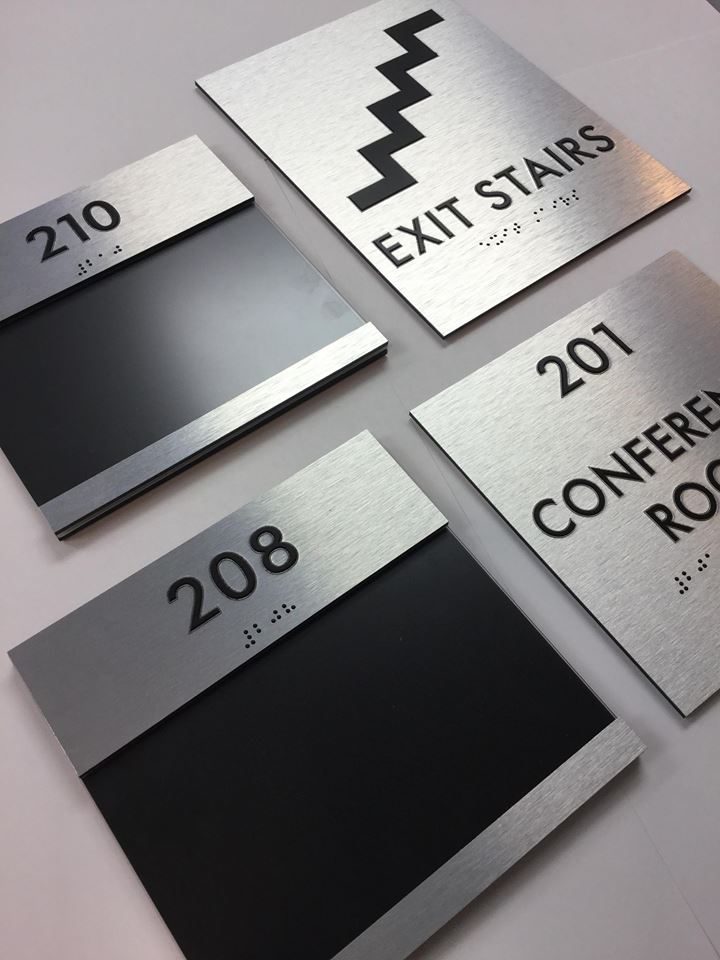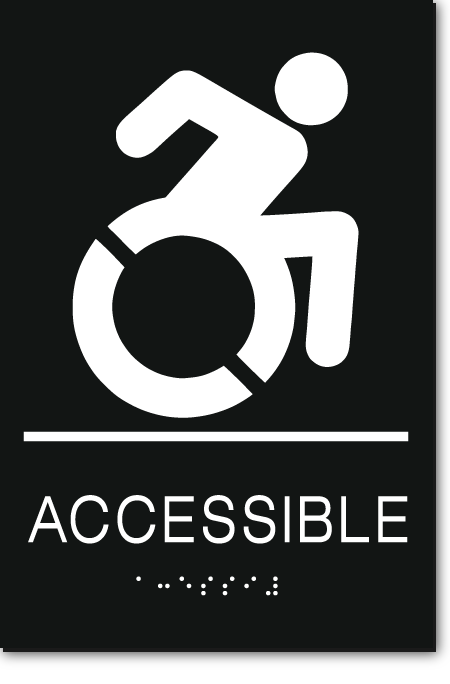ADA Signs: Crucial Devices for Inclusive Atmospheres
ADA Signs: Crucial Devices for Inclusive Atmospheres
Blog Article
Exploring the Key Features of ADA Indications for Improved Availability
In the world of availability, ADA indications serve as silent yet powerful allies, ensuring that spaces are accessible and inclusive for people with disabilities. By incorporating Braille and responsive components, these indications break barriers for the aesthetically impaired, while high-contrast color systems and understandable typefaces accommodate varied aesthetic requirements. Additionally, their calculated placement is not approximate however rather a computed initiative to assist in seamless navigation. Beyond these attributes exists a deeper story concerning the development of inclusivity and the ongoing dedication to producing equitable spaces. What much more could these indications represent in our search of universal accessibility?
Value of ADA Compliance
Making certain conformity with the Americans with Disabilities Act (ADA) is important for cultivating inclusivity and equal gain access to in public areas and offices. The ADA, passed in 1990, mandates that all public centers, companies, and transportation services accommodate people with handicaps, guaranteeing they enjoy the very same civil liberties and opportunities as others. Conformity with ADA criteria not only fulfills legal commitments however additionally enhances a company's track record by demonstrating its commitment to variety and inclusivity.
One of the vital facets of ADA compliance is the execution of easily accessible signage. ADA indicators are developed to make certain that people with handicaps can conveniently navigate via rooms and buildings.
Additionally, sticking to ADA laws can alleviate the risk of possible fines and lawful repercussions. Organizations that fall short to abide by ADA standards may deal with lawsuits or penalties, which can be both monetarily challenging and destructive to their public photo. Thus, ADA compliance is integral to promoting a fair setting for every person.
Braille and Tactile Components
The incorporation of Braille and responsive elements into ADA signage embodies the principles of accessibility and inclusivity. It is commonly placed under the corresponding message on signs to ensure that people can access the details without visual support.
Tactile elements expand beyond Braille and consist of raised signs and personalities. These components are designed to be noticeable by touch, permitting people to recognize space numbers, washrooms, exits, and other crucial areas. The ADA establishes details standards concerning the size, spacing, and placement of these tactile components to enhance readability and make certain consistency across various environments.

High-Contrast Color Schemes
High-contrast color design play a critical duty in enhancing the exposure and readability of ADA signs for people with aesthetic disabilities. These plans are essential as they take full advantage of the difference in light reflectance between text and background, making certain that signs are conveniently discernible, also from a distance. The Americans with Disabilities Act (ADA) mandates the usage of specific shade contrasts to accommodate those with minimal vision, making it a vital facet of compliance.
The effectiveness of high-contrast shades hinges on their capacity to stand out in various lights problems, including dimly lit settings and areas with glare. Typically, dark text on a light history or light message on a dark background is employed to attain optimal comparison. Black message on a yellow or white background supplies a plain visual distinction that aids in quick acknowledgment and understanding.

Legible Fonts and Text Dimension
When thinking about the style of ADA signage, the selection of clear typefaces and appropriate text dimension can not be overemphasized. These elements are critical for ensuring that signs come to individuals with visual problems. The Americans with Disabilities Act (ADA) mandates that typefaces must be sans-serif and not italic, oblique, script, highly decorative, or of unusual form. These demands assist make sure that the message is quickly legible from a distance which the personalities are distinct to diverse audiences.
According to ADA guidelines, the minimum message height should be 5/8 inch, and it needs to boost proportionally with checking out distance. Uniformity in text dimension contributes to a cohesive aesthetic experience, helping people in navigating environments effectively.
Additionally, spacing between lines and letters is important to readability. Appropriate spacing prevents characters from showing up crowded, improving readability. By sticking to these standards, developers can substantially enhance ease of access, ensuring that signage offers its intended function for all individuals, despite their aesthetic capabilities.
Reliable Positioning Techniques
Strategic positioning of ADA signage is crucial for making best use of ease of access and making certain compliance with legal criteria. Correctly positioned indicators guide individuals with handicaps efficiently, promoting navigating in public spaces. Key considerations consist of closeness, height, and exposure. ADA standards stipulate that signs ought to be installed at an elevation in between 48 to 60 inches from the ground to guarantee they are within the line of view for both standing and seated individuals. This conventional elevation variety is important for inclusivity, making it possible for mobility device users and individuals of varying heights to access details effortlessly.
In addition, indications should be placed nearby to the latch side of doors to permit simple identification prior to access. Consistency in sign positioning throughout a center improves predictability, decreasing confusion and boosting general customer experience.
Conclusion
ADA signs play an important function in promoting ease of access by integrating functions that deal with the demands of people with disabilities. These aspects jointly foster an inclusive environment, underscoring the significance of ADA conformity in ensuring equal access for all.
In the world of accessibility, ADA indicators offer as silent yet effective allies, making sure that spaces are inclusive and navigable for individuals with disabilities. The ADA, established in 1990, mandates that all public centers, employers, and transportation services accommodate people with handicaps, guaranteeing they delight in the this hyperlink same civil liberties and chances as others. ADA Signs. ADA indications are designed to make certain that people with impairments can quickly browse through areas and buildings. ADA standards stipulate that signs need to be installed at a height in between 48 to 60 inches from the ground to ensure they are within the line of view for both standing and seated people.ADA indications play a vital duty in promoting accessibility by incorporating features that deal with the needs of individuals with disabilities
Report this page